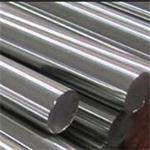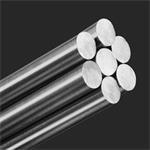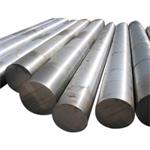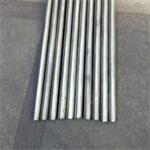316l stainless steel rod
316L is a stainless steel grade, AISI 316L is the corresponding US label, and sus 316L is the corresponding Japanese label. China’s unified digital code is S31603, the standard grade is 022Cr17Ni12Mo2 (new standard), the old grade is 00Cr17Ni14Mo2, which means that it mainly contains Cr, Ni, Mo, and the number indicates the percentage that is probably contained. The national standard is GB/T 20878-2007 (current version).


Main components of 316L stainless steel rod:
Cr, Ni, Mo Standard grade 022Cr17Ni12Mo2
316L stainless steel rod chemical composition:
Carbon C : ≤ 0.030 Silicon Si: ≤ 1.00
Manganese Mn: ≤ 2.00
Sulfur S :≤0.030
Phosphorus P :≤0.045
Chromium Cr: 16.00~18.00
Nickel Ni: 10.00~14.00
Molybdenum Mo: 2.00~3.00
Corrosion resistance
316L has a wide range of applications in the chemical industry due to its excellent corrosion resistance. 316L is also a derivative of 18-8 austenitic stainless steel with 2 to 3% Mo added. On the basis of 316L, many steel types are also derived. For example, 316Ti is derived after adding a small amount of Ti, 316N is derived after adding a small amount of N, and 317L is derived by increasing the content of Ni and Mo.
Most of the existing 316L on the market is produced according to the American standard. For cost reasons, steel mills generally rely on the Ni content of the product to the lower limit. The American standard stipulates that the Ni content of 316L is 10-14%, and the Japanese standard stipulates that the Ni content of 316L is 12-15%. According to the minimum standard, there is a 2% difference in the Ni content between the American standard and the Japanese standard. The price is still quite large, so the customer still needs to see when purchasing the 316L product. The product is based on the ASTM or JIS standard.
The Mo content of 316L makes this steel grade excellent in pitting resistance and can be safely applied in halogen-containing environments such as Cl-. Since the main application of 316L is its chemical properties, steel mills have a slightly lower surface inspection requirement for 316L (relative to 304), and customers with higher surface requirements should strengthen the surface inspection.
Mechanical properties
Tensile strength σb (MPa): ≥ 480
Conditional yield strength σ0.2 (MPa): ≥177
Elongation δ5 (%): ≥ 40
Area shrinkage ψ (%): ≥ 60
Hardness: ≤187HB; ≤90HRB; ≤200HV
Density: 7.98g/cm3;
Specific heat capacity ratio (20 ° C): 0.502 J / (g * K)
Thermal conductivity (W/(m*K))


Heat treatment
Solid solution 1010 ~ 1150 ° C fast cooling.
Microstructure
The structure is characterized by austenitic stainless steel.
Related Reading 416 stainless steel rod 410 stainless steel bar 321 stainless steel bar 316f stainless steel bar 304F stainless steel bar